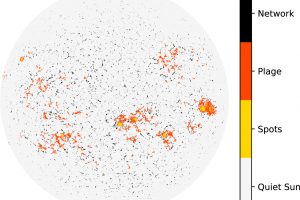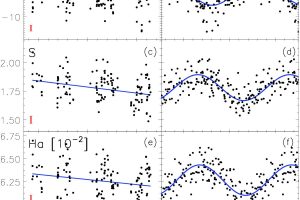The study: “Estimating Magnetic Filling Factors from Simultaneous Spectroscopy and Photometry: Disentangling Spots, Plage, and Network” of T. W. Milbourne (Harvard University), recently appeared on ApJ, present two new methods that allow astronomers to estimate the filling factor of magnetic active regions

About 20% of the exoplanets discovered so far (October 2021) were found with measurements of radial velocity (data from https://exoplanets.nasa.gov/). This method is based on spectroscopic observations of stars with planets, from which it is possible to measure the Doppler effect produced by periodic oscillations of the star, due to the gravitational attraction between star and planet along the orbit of
» Read more
